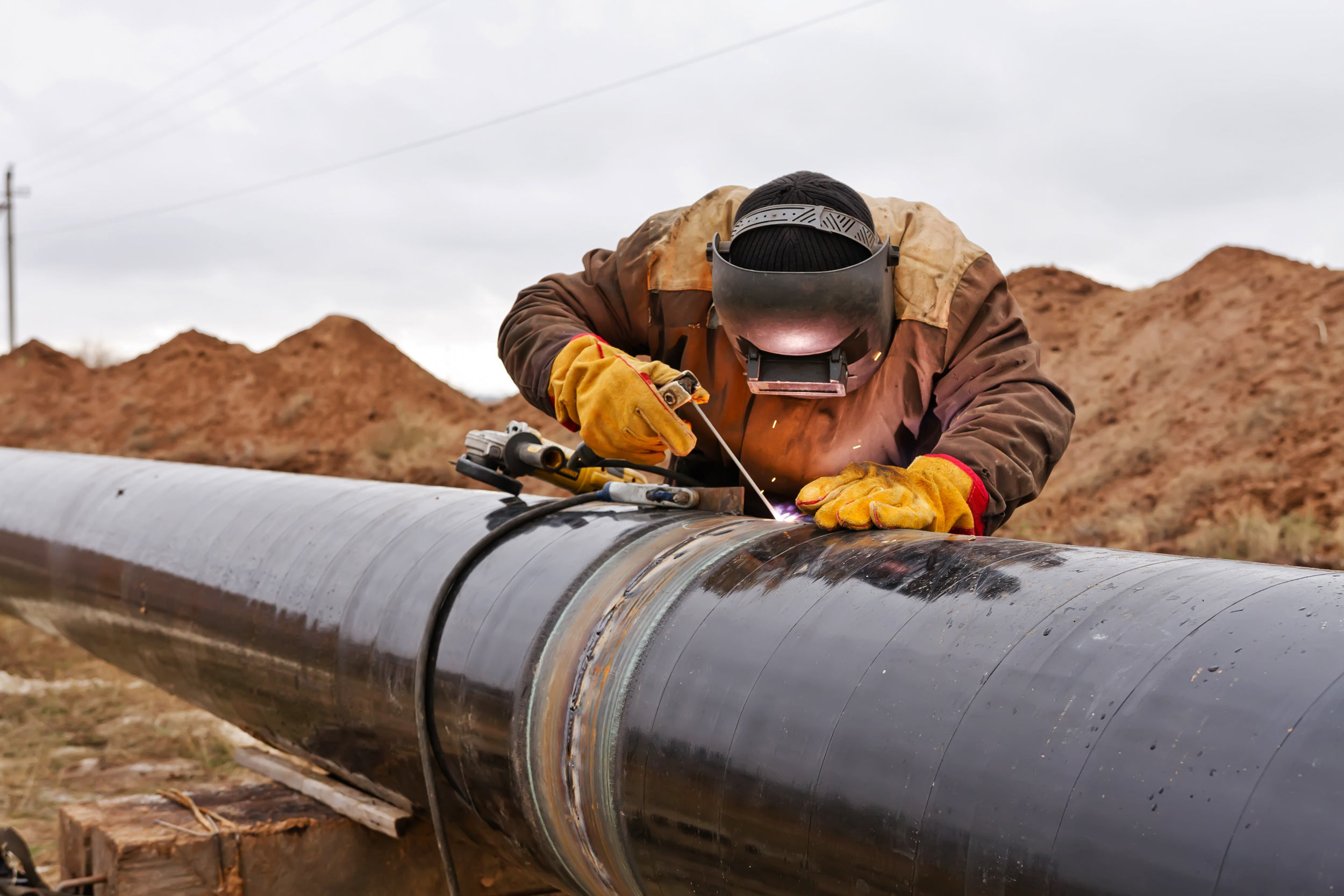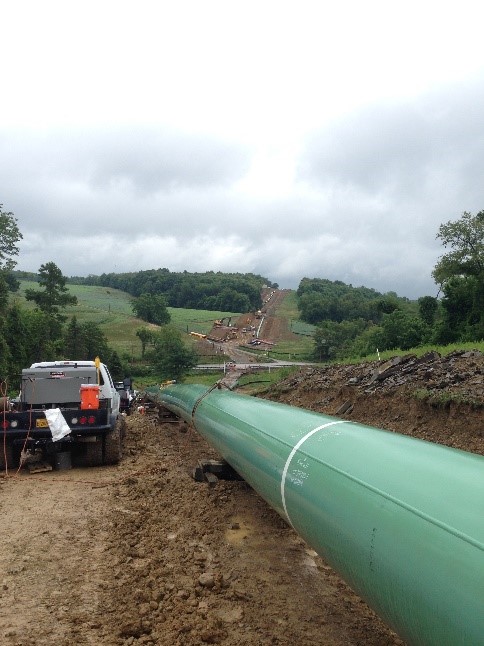Complete Walkthrough to Successful Creek Pipe pipeline construction
Wiki Article
What You Must Learn About Pipe Trenching Solutions: An In-depth Introduction of Available Options
Pipe trenching services are vital for the installation and upkeep of below ground utilities. They involve numerous techniques tailored to specific demands and settings. Comprehending these methods is vital for reliable job execution. Each alternative offers its very own set of benefits and obstacles. As the demand for efficient utility management rises, understanding what to take into consideration when picking a trenching service becomes essential. What variables should one prioritize to assure success?Comprehending Pipe Trenching: What It Is and Why It Matters
Although usually ignored, pipe trenching is a crucial process in different construction and energy projects. This method involves excavating slim trenches to facilitate the setup of pipes for water, gas, sewage, and telecoms. The value of pipe trenching exists in its duty in guaranteeing that these crucial systems are correctly incorporated right into infrastructure, allowing the secure and efficient shipment of needed services.Proper trenching is crucial for preserving the stability of pipelines and decreasing dangers related to soil erosion and cave-ins. It additionally permits effective evaluations and upkeep of below ground energies. Additionally, understanding the regional guidelines and ecological factors to consider is essential, as incorrect trenching can cause pricey hold-ups and lawful concerns. Inevitably, pipeline trenching works as the fundamental step that supports various construction endeavors, making it a considerable element of modern-day facilities advancement.
Typical Trenching Techniques for Underground Utilities
In the domain of underground energies, numerous trenching approaches play an essential duty in installment and upkeep - Creek Pipe reviews. The open-cut trenching technique, directional dull method, and hydro excavation process each deal one-of-a-kind benefits depending upon the particular project needs. Recognizing these techniques is vital for effective and efficient energy administrationOpen-Cut Trenching Method
Open-cut trenching is an extensively made use of technique for installing below ground energies, particularly when the depth and size of the trench enable efficient accessibility. This method involves digging deep into a trench along the recommended course of the utility, providing straight visibility and access for setup. It is particularly useful for tasks that call for considerable excavation, as it promotes quick installment and assessment. It additionally necessitates mindful planning to lessen disturbance to the surrounding location, consisting of web traffic and existing frameworks. Open-cut trenching is most effective in open areas where the dirt conditions are desirable, but it might be restricted in urban atmospheres as a result of the presence of existing utilities and various other underground barriers.Directional Boring Technique

Hydro Excavation Refine
Just how does hydro excavation stand out among common trenching techniques for underground utilities? Hydro excavation uses high-pressure water and vacuum innovation to safely eliminate soil, enabling accurate digging around sensitive underground utilities. This method minimizes the threat of destructive existing framework contrasted to typical mechanical excavation. By using water to loosen up the soil, hydro excavation offers a less invasive strategy, lowering the possibility for dirt compaction and making sure a cleaner worksite. Additionally, the procedure improves visibility during excavation, boosting total accuracy and efficiency. Hydro excavation is specifically beneficial in city locations where utility lines are largely loaded, making it a favored choice for contractors concentrated on security and precision in below ground jobs.Advantages of Trenching Providers
While different methods exist for mounting underground energies, trenching solutions offer distinctive advantages that make them a preferred option for numerous tasks. One considerable benefit is the cost-effectiveness of trenching, as it typically needs less customized equipment contrasted to options like hydro excavation. This often leads to lower labor and functional costs. Furthermore, trenching can accommodate a vast array of energy types, including water, sewage system, and gas lines, supplying versatility for contractors.Moreover, trenching enables for reliable access to numerous lines in a single excavation, lessening disruption to the surrounding area. The process additionally enables exact installation and repair service, which is crucial for sticking to governing standards and making sure long-term dependability. Inevitably, trenching can be executed fairly swiftly, reducing project timelines and permitting faster solution restoration. These advantages collectively make trenching solutions a sensible option for numerous below ground energy tasks.Disadvantages and Difficulties of Trenching
In spite of the countless benefits of trenching services, there are notable downsides and difficulties that have to be considered. One considerable obstacle is the possibility for dirt instability, which can lead to cave-ins, posing risks to workers and equipment. Additionally, trenching can disrupt existing energy lines, requiring cautious preparation and sychronisation to prevent solution disruptions. The procedure can likewise be lengthy, especially in metropolitan areas where space is limited and access is limited. Trenching may require extensive permits and governing conformity, adding complexity and possible hold-ups to jobs. Environmental concerns, such as soil erosion and damage to neighborhood ecological communities, can develop from incorrect trenching practices. The prices associated with trenching, including labor and equipment, can rise if unforeseen concerns develop during the task, making it necessary for stakeholders to weigh these obstacles against the advantages when thinking about trenching solutions.Secret Variables to Think About When Choosing a Trenching Service
Picking the best trenching solution can significantly influence the success of a job. Numerous essential variables ought to be examined to guarantee an appropriate option. First, the firm's experience and proficiency in trenching procedures are important; a reputable solution with a solid track document is typically a lot more trusted. Next off, reviewing the equipment used is essential, as contemporary equipment can boost efficiency and precision. Furthermore, it is considerable to consider the series of solutions offered, including excavation depth and soil type handling, to verify they satisfy details task requirements.Another factor to review is the company's credibility; client testimonials and endorsements can provide insights into previous performance. Moreover, obtaining detailed quotes that describe costs and timelines will aid in budget administration. Validating conformity with regional regulations and sector requirements is critical for staying clear of potential legal issues. By reviewing these variables, customers can make a notified choice when selecting a trenching solution.Security Actions in Pipe Trenching
In pipeline trenching, security procedures are crucial to making certain employee defense and site honesty. Trick components include the usage of individual protective devices, extensive excavation website examinations, and distinct emergency situation reaction procedures. Carrying out these actions significantly lowers risks linked with trenching operations.Personal Safety Tools
Safety and security in pipe trenching greatly depends on the correct use of individual protective devices (PPE) Employees should put on difficult hats to protect against dropping objects, in addition to high-visibility vests Creek Pipe roustabout to boost their exposure on-site. Steel-toed boots are important for foot security against heavy tools and materials. Furthermore, handwear covers are very important for hand security, specifically when dealing with harsh or sharp things. Respirators may likewise be required in settings with dust or dangerous fumes. Eye security, such as safety and security goggles, should be used to protect against debris. Hearing security is necessary in loud job environments. By adhering to PPE standards, employees can greatly decrease the danger of injury and ensure a more secure trenching procedure.Excavation Website Examination
Correctly examining the excavation site is an essential action in ensuring a risk-free pipeline trenching procedure. This procedure includes examining the website for prospective dangers such as below ground utilities, unsteady soil problems, and close-by frameworks. A detailed analysis permits the recognition of dangers that could compromise employee safety and security. In addition, verifying the soil kind and dampness degrees can assist figure out proper shoring approaches to avoid trench collapses. It is necessary to guarantee that the website is free from debris and that correct signage is displayed to signal employees of continuous operations. Regular examinations throughout the job can likewise help spot any adjustments in site conditions, making it possible for prompt modifications to security measures and job procedures.
Emergency Response Protocols
Emergency situation reaction methods are vital in mitigating risks related to pipeline trenching operations. These protocols assure that all employees are prepared to act quickly and successfully in emergency situations. Key components include normal security drills, clear communication networks, and designated fire escape. On top of that, first-aid kits and emergency situation call numbers need to be readily obtainable on-site. Trenching operations have to additionally include treatments for taking care of unsafe situations, such as collapses or utility strikes. Educating workers on acknowledging potential threats and understanding their functions throughout an emergency situation is critical. Keeping an updated website safety and security plan can greatly boost response efficiency. Generally, efficient emergency situation preparedness cultivates a more secure working setting and minimizes the effect of unexpected incidents.Price Factors To Consider for Trenching Providers
Comprehending the monetary effects of trenching services is essential for task planning and budgeting. The expenses connected with trenching can vary commonly based upon a number of aspects, including task dimension, soil type, and depth of the trench. Labor prices commonly stand for a substantial section of the total cost, as knowledgeable drivers are essential for reliable implementation. Furthermore, equipment rental costs can add to the general budget plan, particularly for specialized machinery.Site accessibility is an additional vital aspect; difficult surface may demand extra resources, raising expenses. Permitting and governing compliance can likewise contribute to expenditures, especially in urban locations where regulations are stringent.Lastly, unpredicted issues, such as running into existing energies, can lead to unanticipated costs and hold-ups. Because of this, getting comprehensive estimates from trusted trenching service suppliers is essential for precise budgeting and ensuring effective task completion.Regularly Asked Concerns
How Long Does a Regular Pipe Trenching Job Take?
The period of a typical pipeline trenching task varies substantially based on elements such as deepness, dirt conditions, and task complexity. Normally, it can take anywhere from a couple of days to several weeks to complete.What Devices Is Generally Utilized in Pipe Trenching?

Exist Environmental Laws for Trenching Activities?
Environmental policies for trenching tasks typically require compliance with local, state, and federal standards. These guidelines intend to minimize ecological disruption, protect water sources, and assurance proper waste management during excavation and installation processes.
Can Trenching Providers Be Incorporated With Various Other Building And Construction Tasks?
Trenching solutions can undoubtedly be integrated with various construction projects. By working with initiatives, effectiveness can be achieved, minimizing disturbances while making sure that all needed facilities work is finished in a timely and affordable fashion.
What Prevail Soil Types Run Into in Trenching?
Usual soil kinds come across in trenching include clay, sand, silt, and loam. Each kind provides distinct challenges, influencing excavation techniques and security, requiring careful preparation to guarantee secure and effective trenching operations.Report this wiki page